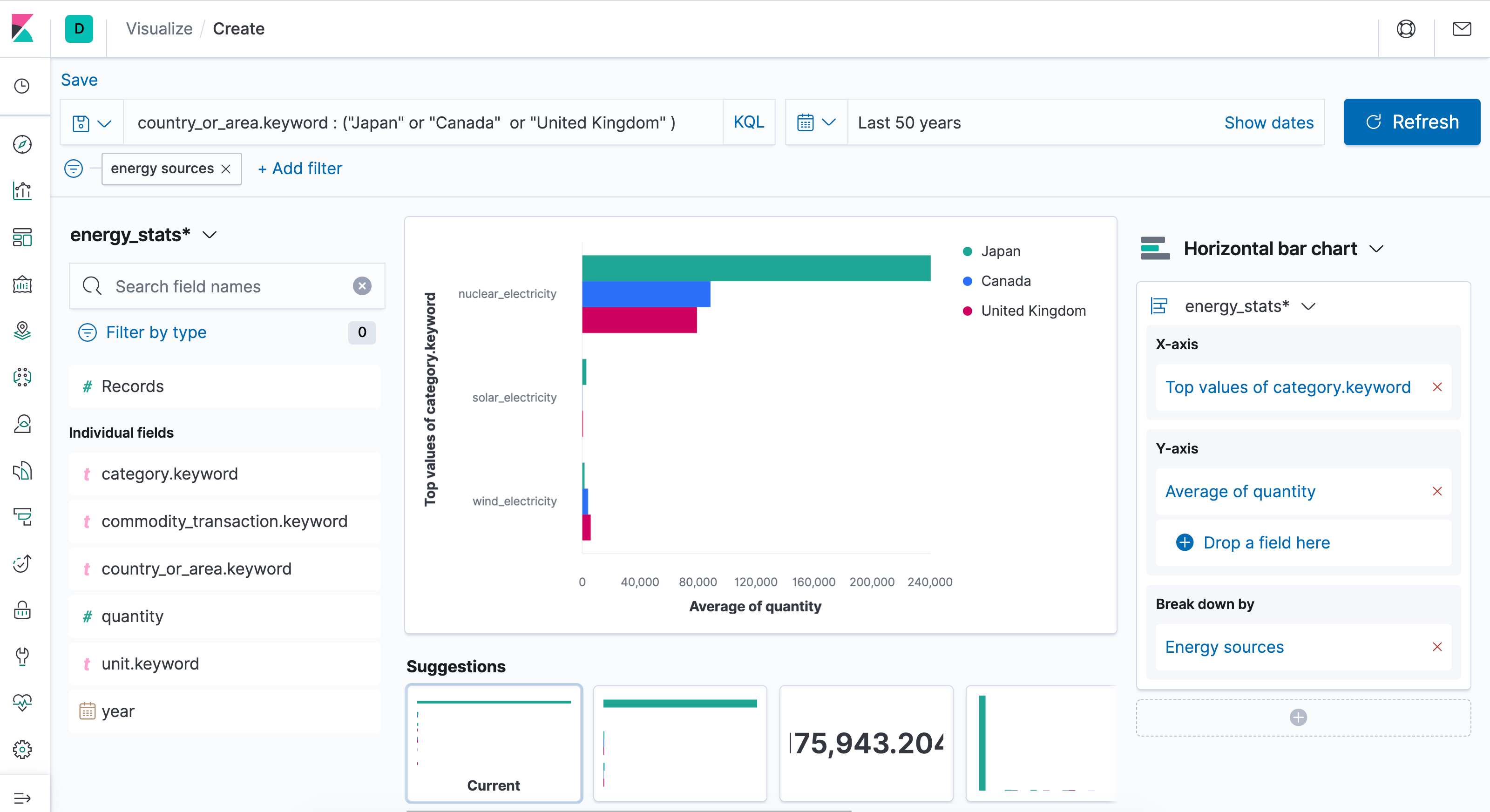Deploying a centralized logging system using ELK Stack with Redis (Managed by Kubernetes)
When coming to developing a system and publish it to the cloud platforms; it has to be delicate enough that the micro-services/mini services works together with harmony and coherence; well of course without any fail-over or any issue at all. But even though establishing a good cloud infrastructure is mandatory, our system should have a fine tuned logging system that we can rely on to monitor which service is down; or better say which micro-service is behaving in a weird way. Not only that; having a centralized logging system will also help developers not to rely on DevOps to get log data(s) when something happened. Everything should be automated in a sense that anyone that needs logs should see it with an appropriate restriction in the logging system.
Which Stack Do We Choose?
When coming to choosing a best stack for centralized logging system; we should consider and choose in many aspects or criteria's like if the stack we're going to use is speedy, open source or commercial, a third party service (usually hosted in the cloud to operate the logging services) ... etc. I chose ELK stack because it has a lot of advantages over the others. For more info why do we choose ELK stack; check this Link out. For now i'm more interested in implementing ELK stack in Kubernetes in a simple and easy way; of course with the addition of Redis for controlling the traffic flow of data from micro-services to Logstash; thus in another term it will protect Logstash to be more stable (act as a pipeline queue) and safe from buffer overflow of incoming data(s).
Before We Begin
I usually use DigitalOcean's kubernetes cluster for testing purposes but you can also use MiniKube for testing it in your localhost. When coming to separating objects of kubernetes; it's better to label the yaml files. For example: When creating a namespace object; i usually create a file called k8s-namespace.yaml in a parent directory named "logging"; the parent name also indicates what infrastructure yaml file it includes; which in our case is for logging purpose.
Let's Roll
1: Creating our Namespace and Elastic Search Service
1.1: Let's Create the Namespace yaml file.
N.B. The initial comment is the name of the file.
# k8s-namespace.yaml
kind: Namespace
apiVersion: v1
metadata:
name: elk-stack1.2: Creating an k8s object called StatefulSet yaml file.
Before we proceed; StatefulSet Object is chosen here because it will assign unique network identifier for each and every pod that manages it, it has also stable and persistent storage. The cool thing about this object is, even if the statefulSet object is deleted/destroyed, storage will be available no matter what ( for security reasons). Here is a Link if you want to know more about StatefulSet object.
N.B: Notice that our elasticsearch image has a configured password called "changeme".
# k8s-elasticsearch-statefulset.yaml
apiVersion: apps/v1
kind: StatefulSet
metadata:
name: es-cluster
namespace: elk-stack
spec:
serviceName: elasticsearch
replicas: 1
selector:
matchLabels:
app: elasticsearch
template:
metadata:
labels:
app: elasticsearch
spec:
containers:
- name: elasticsearch
image: docker.elastic.co/elasticsearch/elasticsearch:7.8.0
resources:
limits:
cpu: 1000m
requests:
cpu: 100m
ports:
- containerPort: 9200
name: rest
protocol: TCP
- containerPort: 9300
name: inter-node
protocol: TCP
volumeMounts:
- name: data
mountPath: /usr/share/elasticsearch/data
env:
- name: cluster.name
value: k8s-logs
- name: network.host
value: 0.0.0.0
- name: node.name
valueFrom:
fieldRef:
fieldPath: metadata.name
- name: discovery.seed_hosts
value: "es-cluster-0.elasticsearch"
- name: cluster.initial_master_nodes
value: "es-cluster-0"
- name: xpack.license.self_generated.type
value: "trial"
- name: xpack.security.enabled
value: "true"
- name: xpack.monitoring.collection.enabled
value: "true"
- name: ES_JAVA_OPTS
value: "-Xms256m -Xmx256m"
- name: ELASTIC_PASSWORD
value: "changeme"
initContainers:
- name: fix-permissions
image: busybox
command:
["sh", "-c", "chown -R 1000:1000 /usr/share/elasticsearch/data"]
securityContext:
privileged: true
volumeMounts:
- name: data
mountPath: /usr/share/elasticsearch/data
- name: increase-vm-max-map
image: busybox
command: ["sysctl", "-w", "vm.max_map_count=262144"]
securityContext:
privileged: true
- name: increase-fd-ulimit
image: busybox
command: ["sh", "-c", "ulimit -n 65536"]
securityContext:
privileged: true
volumeClaimTemplates:
- metadata:
name: data
labels:
app: elasticsearch
spec:
accessModes: ["ReadWriteOnce"]
storageClassName: do-block-storage
resources:
requests:
storage: 5Gi
1.3: Headless Service For StatefulSet Object
Our third step will reside in having a headless service for our SatefulSet object. That is because StatefulSet requires Headless Service to be operational.
# k8s-elasticsearch-svc.yaml
kind: Service
apiVersion: v1
metadata:
name: elasticsearch
namespace: elk-stack
labels:
app: elasticsearch
spec:
selector:
app: elasticsearch
clusterIP: None
ports:
- port: 9200
name: rest
- port: 9300
name: inter-node1.4: Running our finished "ElasticSearch" service only.
Use this command to run those yaml files that we've created up to now.
kubectl apply -f k8s-namespace.yaml -f k8s-elasticsearch-svc.yaml -f k8s-k8s-elasticsearch-statefulset.yaml2: Creating Our Redis and Logstash Services
2.1 Redis Implementation in our kubernetes yaml file.
Now that we have elasticsearch service running and working properly; let us create our Redis instance.
N.B. Service object is included for the sake of simplicity.
# k8s-redis.yaml
kind: Service
apiVersion: v1
metadata:
name: redis
namespace: elk-stack
labels:
app: redis
spec:
ports:
- port: 6379
selector:
app: redis
---
apiVersion: apps/v1
kind: Deployment
metadata:
name: redis
namespace: elk-stack
labels:
app: redis
spec:
replicas: 1
selector:
matchLabels:
app: redis
template:
metadata:
labels:
app: redis
spec:
containers:
- name: redis
image: bitnami/redis:latest
resources:
limits:
cpu: 1000m
requests:
cpu: 100m
env:
- name: REDIS_PASSWORD
value: my_redis_password
ports:
- containerPort: 63792.2 Logstash Implementation
Propagating log data through Redis is not enough, thus Logstash is required and is because it's responsible to pull data from Redis and feed it to Elastic Search service. Here is the yaml file implementation.
Notice that we also have a ConfigMap and Service (type: ClusterIP) objects for configuring and networking respectively.
# k8s-logstash.yaml
apiVersion: v1
kind: ConfigMap
metadata:
name: logstash-config
namespace: elk-stack
data:
logstash.conf: |-
input {
redis {
host => "redis"
password => "my_redis_password"
key => "my_key_logs"
data_type => "list"
}
}
output {
elasticsearch {
hosts => "elasticsearch:9200"
user => "elastic"
password => "changeme"
index => "logstash-%{+YYYY.MM.dd}"
sniffing => false
}
}
logstash.yml: |-
http.host: "0.0.0.0"
path.config: /usr/share/logstash/pipeline
xpack.monitoring.enabled: false
xpack.monitoring.elasticsearch.username: elastic
xpack.monitoring.elasticsearch.password: changeme
---
kind: Service
apiVersion: v1
metadata:
name: logstash
namespace: elk-stack
labels:
app: logstash
spec:
ports:
- port: 9600
selector:
app: logstash
---
kind: Deployment
apiVersion: apps/v1
metadata:
name: logstash
namespace: elk-stack
labels:
app: logstash
spec:
replicas: 1
selector:
matchLabels:
app: logstash
template:
metadata:
labels:
app: logstash
spec:
containers:
- name: logstash
ports:
- containerPort: 9600
image: docker.elastic.co/logstash/logstash:7.8.0
volumeMounts:
- name: config
mountPath: /usr/share/logstash/config/logstash.yml
subPath: logstash.yml
readOnly: true
- name: pipeline
mountPath: /usr/share/logstash/pipeline
readOnly: true
command:
- logstash
resources:
limits:
memory: 1Gi
cpu: "200m"
requests:
memory: 400m
cpu: "200m"
volumes:
- name: pipeline
configMap:
name: logstash-config
items:
- key: logstash.conf
path: logstash.conf
- name: config
configMap:
name: logstash-config
items:
- key: logstash.yml
path: logstash.ymlTo run our Redis and Logstash service:
kubectl apply -f k8s-redis.yaml -f k8s-logstash.yaml3: Kibana Implementation
3.1: Kibana Implementation for a Dashboard view.
We've reached on our last implementation of kibana. Kibana is responsible to show what logged data are being stored in our elastic search service. Not only that; we'll have also the power to filter and see what's logged at what time and whatnot.
N.B. File have implementation of ConfigMap and Service object.
# k8s-kibana.yaml
apiVersion: v1
kind: ConfigMap
metadata:
name: kibana-config
namespace: elk-stack
data:
kibana.yml: |-
server.name: kibana
server.host: 0.0.0.0
elasticsearch.hosts: [ "http://elasticsearch:9200" ]
monitoring.ui.container.elasticsearch.enabled: true
elasticsearch.username: elastic
elasticsearch.password: changeme
---
apiVersion: v1
kind: Service
metadata:
name: kibana
namespace: elk-stack
labels:
app: kibana
spec:
ports:
- port: 80
targetPort: 5601
selector:
app: kibana
---
apiVersion: apps/v1
kind: Deployment
metadata:
name: kibana
namespace: elk-stack
labels:
app: kibana
spec:
replicas: 1
selector:
matchLabels:
app: kibana
template:
metadata:
labels:
app: kibana
spec:
containers:
- name: kibana
image: docker.elastic.co/kibana/kibana:7.8.0
volumeMounts:
- name: pipeline
mountPath: /usr/share/kibana/config/kibana.yml
subPath: kibana.yml
readOnly: true
resources:
limits:
cpu: 1000m
requests:
cpu: 200m
ports:
- containerPort: 5601
volumes:
- name: pipeline
configMap:
name: kibana-config
items:
- key: kibana.yml
path: kibana.yml
3.2 Ingress for Kibana Service.
Now that we only have one service that face to the public which is our kibana service; let us create an Ingress object for that.
# k8s-ingress-kibana.yaml
apiVersion: networking.k8s.io/v1beta1
kind: Ingress
metadata:
name: kibana-ingress
namespace: elk-stack
spec:
rules:
- host: logs.example.com
http:
paths:
- backend:
serviceName: kibana
servicePort: 80I'll leave the "letsencrypt" implementation for the sake of brevity. But if you want to implement Kubernetes Ingress Controller (nginx type). Here's the Link for it. And that's how you easily run it in DigitalOcean:
kubectl apply -f https://raw.githubusercontent.com/kubernetes/ingress-nginx/controller-v0.35.0/deploy/static/provider/do/deploy.yaml
# Then spin-up our kibana service with the following command.
kubectl apply -f k8s-ingress-kibana.yaml -f k8s-kibana.yaml
If you're lazy to read all of my non sense 😉
Here is a my GitHub Repository link which contains all yaml files.



